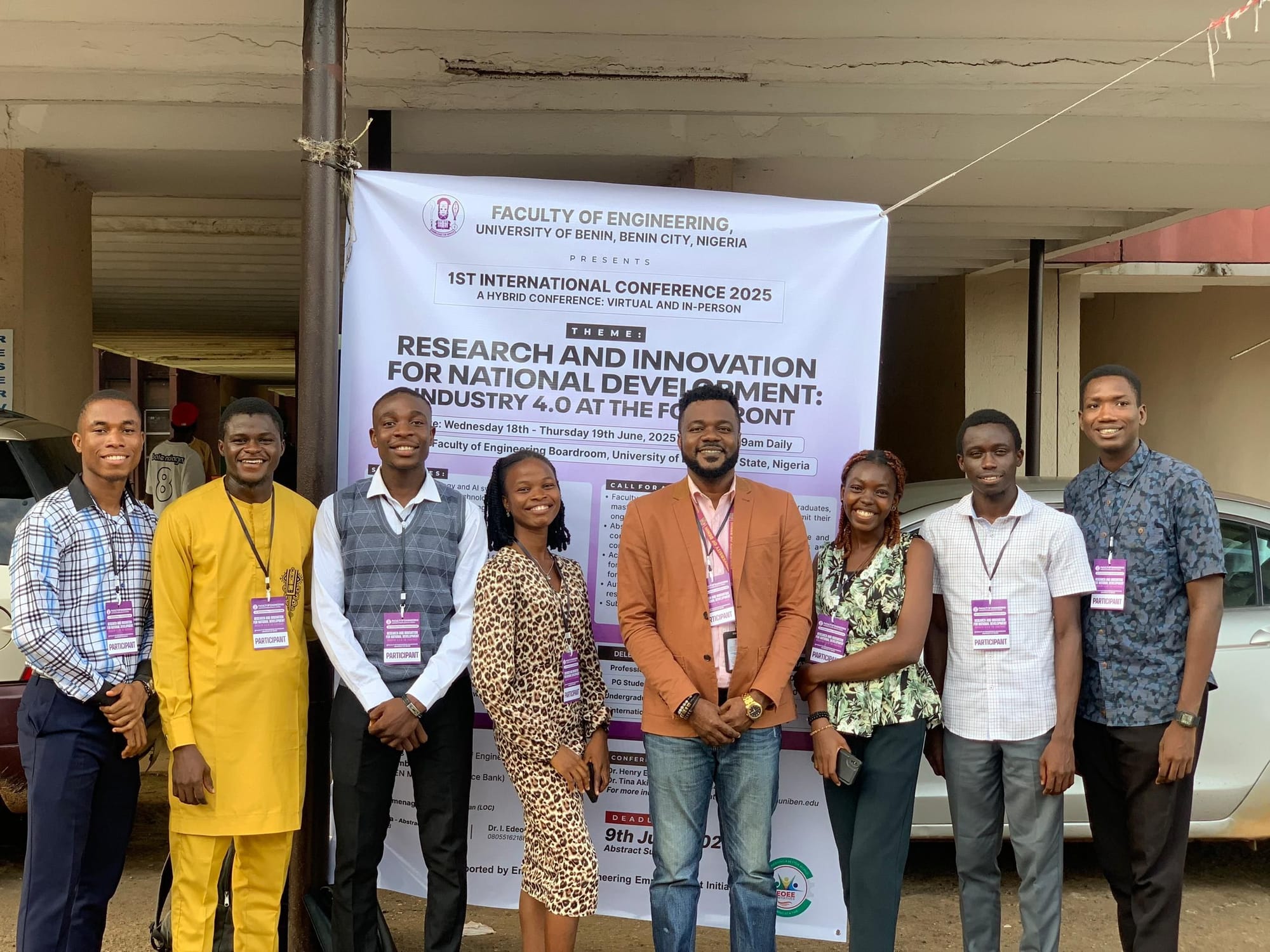BVL Research Assistants Shine at UNIBEN Engineering International Conference

As part of its core mission to nurture the next generation of researchers, the Bioresources Valorization Lab (BVL) successfully led a team of emerging scholars to participate in the 1st International Conference of the Faculty of Engineering, held at the University of Benin from June 18–19, 2025. The conference, themed “Research and Innovation for National Development: Industry 4.0 at the Forefront,” brought together engineers, scientists, and industry experts from across Nigeria and beyond to explore innovative solutions for sustainable development.The BVL team, led by Prof. N.A. Amenaghawon, presented research across a range of themes including clean energy, wastewater treatment, catalysis, and bioresource optimization. For most of the students, it was their first major conference presentation, and a truly transformative learning experience.
“It was surreal to stand before senior researchers and share my work,” said Jeff, who presented a paper on the transesterification of animal fat to biodiesel using a heterogeneous catalyst derived from chicken eggshells. “The feedback I received has helped me see new directions for improving my research.”
Godwin’s work focused on optimizing the removal of total hydrocarbon content and chemical oxygen demand from oilfield-produced water, using chemically activated palm kernel shells. “Preparing for this conference taught me more than just technical skills,” he noted. “It sharpened how I think about real-world applications.”Isreal presented on the treatment of beverage wastewater using a combination of TiO₂ and natural kaolin clay, optimized through response surface methodology (RSM). “I learned how to translate data into meaningful stories,” he said. “It was the networking and exchange of ideas that made it even more valuable. ”Favour Eloviano presented her research on photodegradation of pollutants in paint effluent using a hybrid photocatalyst of TiO₂ and bentonite clay. Her study addressed turbidity, BOD, and COD levels in industrial wastewater. “Hearing others engage with my work made me realize just how relevant our local problems are to global conversations. ”In the same session, Miracle presented a study on removing Pb(II) ions from aqueous solutions using composite adsorbents made from valorized waste. “This was the push I needed to start seeing myself as a real researcher,” he said. Royal’s paper provided a technoeconomic analysis of biodiesel production from a blend of non-edible oils using a one-pot transesterification process. “Attending the conference helped me connect the dots between research and scalable industrial practice,” she reflected. Obinna explored the production of gluconic acid from agricultural waste, using meta-heuristic optimization to improve yield. “The hands-on feedback from experts was incredibly useful,” he shared. Finally, Elizabeth presented her work on formulating an optimal blend of neem and yellow oleander oils for biodiesel production. “Seeing the audience engage with the results of my experiments made the hours in the lab worth it,” she said with a smile. According to Prof. Amenaghawon, the conference was more than an academic exercise; it was an opportunity to build confidence, professionalism, and a strong foundation for long-term research careers.
“We believe in raising an army of researchers - people who not only generate knowledge but are also bold enough to share it, defend it, and apply it where it matters most,” he said. “This is only the beginning.”
With their first international presentations under their belt, these young researchers return to the lab with new insights, fresh motivation, and valuable connections that will shape their journey ahead.